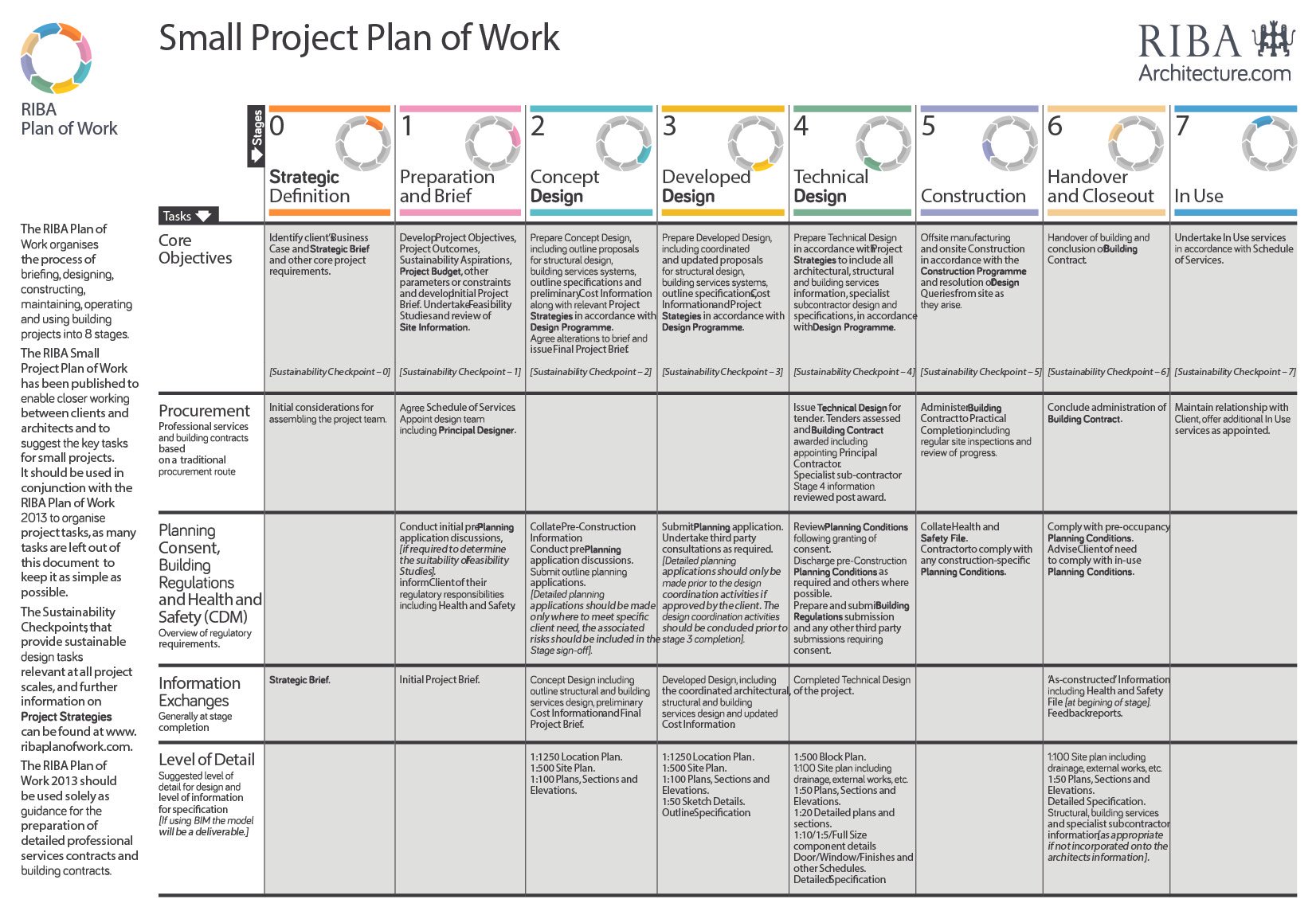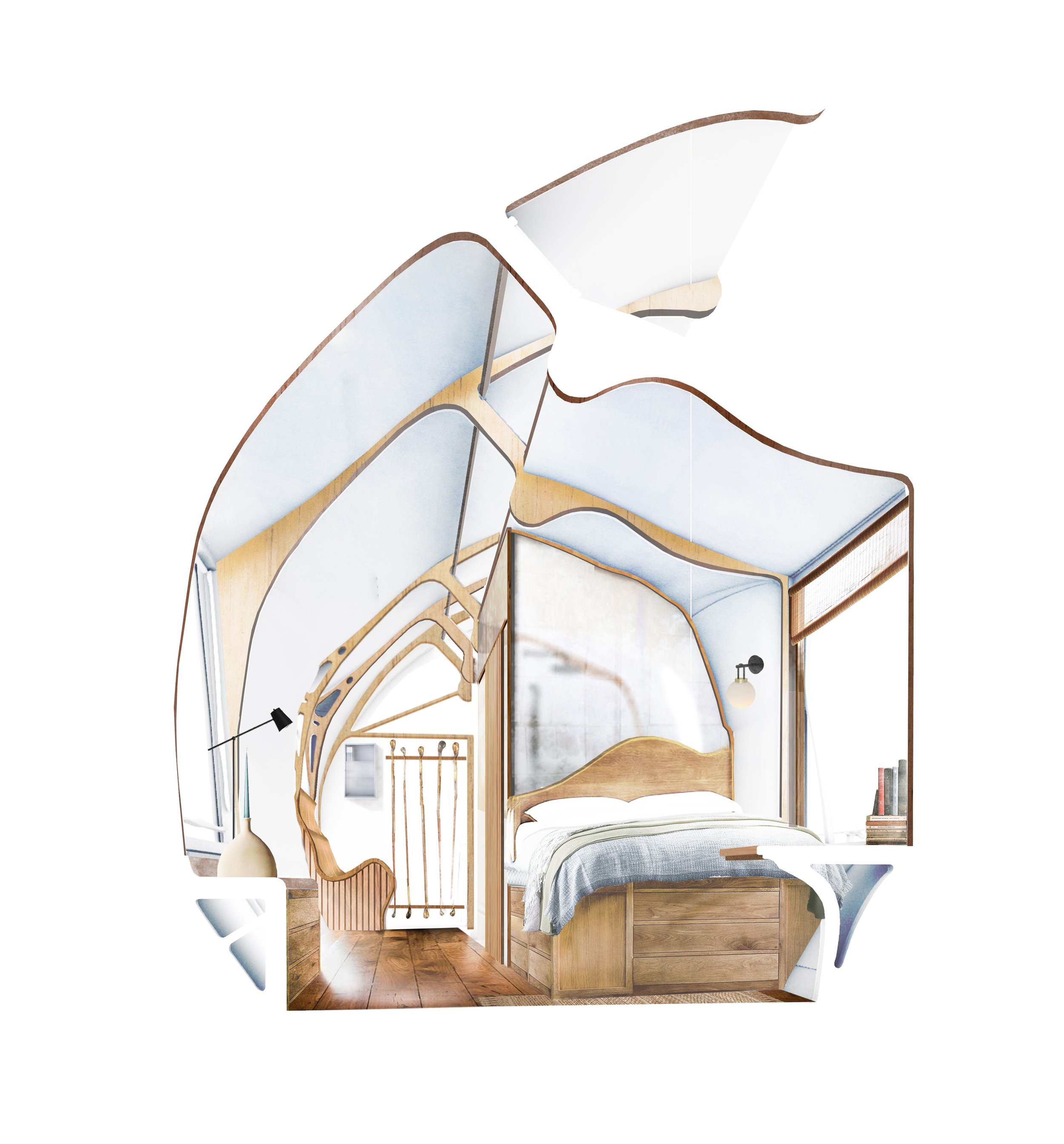RIBA Plan of Work: Simple Guide for Self-Build & Small Projects [2025]
We help Maximise Your Rental Income with Eco-homes and Luxury Holiday Homes, provided by RIBA Chartered Architects.
RIBA Plan of Work: Your Step-by-Step Guide for a Smooth Self-Build
Building your own home can feel overwhelming. From navigating planning permission to keeping track of budgets and timelines. The RIBA Plan of Work is your clear, step-by-step roadmap from the first sketch to moving in, helping you avoid costly mistakes and keep your build running smoothly. It is also a guide followed by all the sub-consultants, including planners, engineers, and cost consultants.
Working with a RIBA Chartered Architect means having an expert to coordinate every stage, solve problems before they escalate, and mitigate project risks.
In this guide, we break down the 8 stages of the RIBA Plan of Work, explaining exactly what happens at each point and how it applies to a self-build or small project.
The RIBA Small Project Plan of Work outlines the eight key stages of a building project. From initial strategy through to completion and aftercare. This framework is tailored for smaller, bespoke builds such as eco-holiday homes, timber cabins, and luxury self-builds, ensuring clarity, efficiency, and sustainability at every step.
Why Use the RIBA Plan of Work for Small Projects?
The RIBA Plan of Work breaks any building project into eight clear stages. From your first briefing to design, construction, and aftercare.
For smaller or bespoke projects like eco-holiday homes, timber cabins, or luxury self-builds, the simplified version keeps the process straightforward without cutting corners. It helps you and your architect stay on the same page, keeps timelines realistic, and ensures your budget is protected.
Even in its streamlined form, it still carries the sustainability, planning, and compliance principles of the full RIBA framework, giving you the confidence that your project is in safe hands from concept to completion.
RIBA Stage 0: Strategic Definition
This first stage is all about clarity and vision. We work with you to define your business or personal goals and create a clear strategic brief. In my view, Stage 0 is the most important of all the RIBA Work Stages, yet it’s the work stage that is often overlooked.
Too often, clients come to us with a fixed idea of how to move forward with the project, only to discover that a different approach would deliver a better outcome. Without taking the time to properly complete Stage 0, these opportunities for smarter, more profitable decisions are missed. This stage ensures we explore all the possibilities before committing, so your project starts on the strongest possible footing.
For some clients, this means launching or expanding a holiday let business; for others, it’s about unlocking the potential of underused land or exploring new build opportunities.
At this point, we assess how your ideas align with market demand, budget, planning constraints, and long-term return on investment. Whether you’re eyeing a remote plot for a luxury timber cabin or evaluating land for an eco-friendly self-build, this stage lays the groundwork. It ensures that you and your architect share the same vision before the design process begins.
Speak to Peter the Architect
Book Your Free 20-Minute RIBA Project Planning Call
If you're planning a self-build, extension, holiday cabin or small development, a call can help you understand where you are in the RIBA Plan of Work and what to do next. We can cover:
How your project fits within the RIBA stages
Whether you need a feasibility study
Key planning and site considerations
Budget expectations at each stage
How to avoid delays and keep things running smoothly
Gantt chart showing how we plan and track a project using the RIBA Small Project Plan of Work. It maps every stage from first ideas to completion, helping keep even the smallest builds on schedule, coordinated, and running smoothly.
RIBA Stage 1: Preparation and Brief
This is where we set the foundations for a successful project. We work with you to lock down the essentials, your objectives, desired outcomes, sustainability targets, budget, and any site-specific constraints. The aim is simple: create a clear, workable brief that gives the build the best possible start.
At this stage, I always recommend a pre-design feasibility study. It’s where we test the idea before you commit to major costs, checking planning potential, identifying risks, and finding smarter, more cost-effective ways to deliver. Skipping this step is where many self-build and holiday home projects go wrong.
We’ll also assess the site for any challenges early, from planning restrictions to access issues. This early clarity can save months of delays and protect your budget. In some cases, it’s worth speaking with neighbours now to build goodwill and reduce objections later, something we can handle on your behalf if you prefer.
By the end of this stage, you’ll know exactly what’s possible, what it will take, giving you more information required for moving forward.
RIBA Stage 1: Preparation and Brief – Illustrated site plan showing potential locations for elevated timber holiday cabins. This stage helps visualise how a project could sit within its landscape, guiding early design, feasibility, and planning decisions.
RIBA Stage 2: Concept Design
RIBA Stage 2 is where ideas take shape. We develop outline designs, looking at structure, materials, and key features, alongside early cost checks to keep the project on budget. This is also when we set out strategies for sustainability, planning, and buildability, better ensuring the concept is both exciting and achievable.
RIBA Stage 2: Concept Design – Exploring the vision in 3D. At this stage, we bring ideas to life with concept visuals, looking at form, layout, and how the building sits in its landscape—balancing creativity with early cost and feasibility checks.
RIBA Stage 3: Develop Design
Here is where your concept takes on real substance. We refine the design, coordinating structural details, building services, and material choices so everything works seamlessly together. Cost plans and project strategies are updated to stay aligned with your goals and budget.
Stage 3 is also the point where planning applications are usually submitted, or where we secure Permitted Development rights if that’s the route. Once this stage is signed off, the design is essentially locked in; major changes later will be harder, slower, and more expensive. That’s why we make sure every detail is reviewed and agreed upon now, to make the technical stage more straightforward.
In my view, this is one of the most satisfying stages. Seeing the project evolve from an idea into a fully resolved, build-ready design that everyone is excited to bring to life.
RIBA Stage 3: Developed Design: An interior cutaway of the Monocoque Cabin, showing how the flowing timber frame, curved ceiling, and bespoke joinery come together in a fully resolved design. At this stage, every detail is coordinated, from structure and layout to finishes and fittings, ready for technical development and construction.
RIBA Stage 4: Technical Design
Stage 4 is where the project becomes build-ready. Here, we produce the detailed technical drawings, building control documentation, and fully coordinated specifications needed to take the project to site. Every architectural, structural, and building services element is resolved, with specialist subcontractor details integrated to ensure compliance with regulations.
By the end of this stage, the design is prepared for construction, reducing the risk of delays, cost overruns, or on-site surprises. In my experience, a well-executed Stage 4 is the single biggest safeguard against headaches once the build begins.
RIBA Stage 4: Technical Design: A detailed section drawing of the Monocoque Cabin’s curved wall, illustrating the build-up from foundation to finish. Every layer, from cedar shingles to insulation and vapour barriers, is precisely specified at this stage to ensure accuracy, compliance, and a seamless build process.
RIBA Stage 5: Construction
Stage 5 involves the actual execution of the project. Stage 5 covers both off-site manufacturing, where precision components are fabricated, and on-site construction, where everything comes together under the agreed programme. By this point, timelines are set, roles are clear, and every detail follows the technical design established earlier. Any last-minute tweaks are addressed quickly to keep things moving, with close coordination between all parties ensuring the build runs smoothly and stays true to the original vision.
RIBA Stage 5: Construction: The Monocoque Cabin is being assembled on-site, taking shape, with skilled trades assembling its precision-cut timber panels on-site after off-site fabrication, ensuring speed, accuracy, and minimal disruption.
RIBA Stage 6: Handover and Closeout
Stage 6 is where your project officially moves from “build” to “ready to use.” We carry out final inspections, resolve any outstanding snags, and make sure every detail matches the agreed specification. You’ll receive all the essential documents — from warranties to user manuals — so you can operate and maintain your building with confidence. It’s the formal close of the construction phase and the point where you take full ownership, knowing everything is in place.
RIBA Stage 7: In Use
Stage 7 is one of the most valuable, yet most often skipped, stages of a project. This is where we see how your building performs in the real world, gathering feedback to ensure it’s doing exactly what it was designed to do.
For us, it’s a chance to learn, improve, and feed that insight into future projects. For you, it’s the moment to ask questions, tweak performance, and make sure your investment delivers for the long term. Not many clients go the full distance to this stage, but the Monocoque Cabin did, and it’s proof of how much long-term value Stage 7 can add.
For developers building luxury holiday homes with plans to scale, this stage is especially powerful. It gives you invaluable data and lessons that can directly shape and strengthen your next project.
RIBA Stage 7: In Use The Monocoque Cabin in its natural setting, thriving post-occupancy. This stage captures real-world performance and guest experience, helping fine-tune design and functionality for long-term success.
RIBA Chartered Architects:
We’re a Birmingham-based RIBA Chartered Architecture Practice working on projects across the UK. If you’ve found this post helpful, you’re very welcome to use the link below to arrange a free consultation and talk through your project and early ideas.








